The Battle of Verdun is often regarded as one of the most brutal and prolonged conflicts of the First World War. What began as a German offensive to "bleed France white" would ultimately become a grinding battle of attrition that devastated both sides. Over the course of 10 months, more than 300,000 casualties were suffered on each side, making it one of the deadliest battles in history. The sheer scale of the carnage and the relentless nature of the fighting have etched Verdun into the collective memory of the war, serving as a poignant reminder of the immense human toll exacted by the Great War.
Key Points
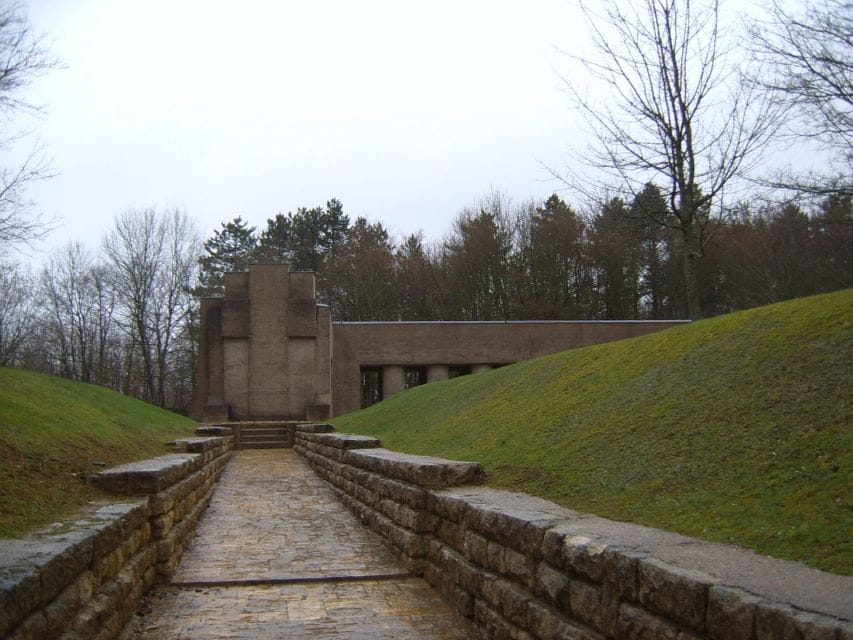
- The Battle of Verdun was a brutal and costly conflict, with over 300,000 casualties on each side, making it one of the deadliest battles in history.
- The German offensive began on February 21, 1916, with a relentless 10-hour artillery barrage that tore apart the landscape and set the stage for the grueling campaign.
- The Douaumont Ossuary serves as a poignant reminder of the immense human toll, housing the remains of over 130,000 unidentified French and German soldiers.
- The Bayonet Trench Monument powerfully evokes the intensity of the close-quarters combat that defined the battle’s brutal urban warfare.
- The tour offers visitors a chance to explore the Douaumont Fort, Fleury Village ruins, and Froideterre Fort, providing a glimpse into the hardships endured by the soldiers and the devastation of the battlefield.
The Battle Significance
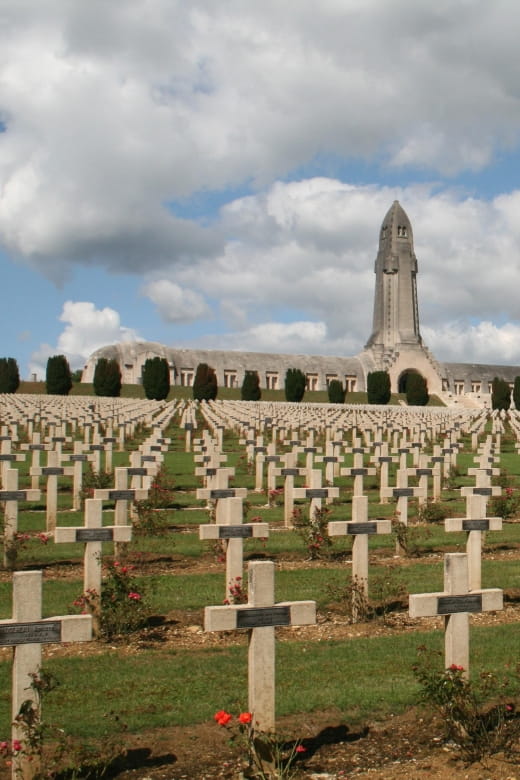
The Battle of Verdun is widely regarded as one of the most significant and grueling engagements of World War I, pitting the German and French armies against each other in a relentless struggle for control over a small but strategically vital region.
Fought between February and December 1916, the battle saw over 300,000 casualties on each side, making it one of the deadliest conflicts in human history.
The immense scale of the battle and the sheer tenacity of the opposing forces have cemented Verdun’s place in the annals of military history, serving as a poignant symbol of the immense human toll exacted by the Great War.
The fight for Verdun became a microcosm of the larger conflict, embodying the unimaginable devastation that defined the Western Front.
You can also read our reviews of more tours and experiences in Verdun.
Beginning of the Offensive
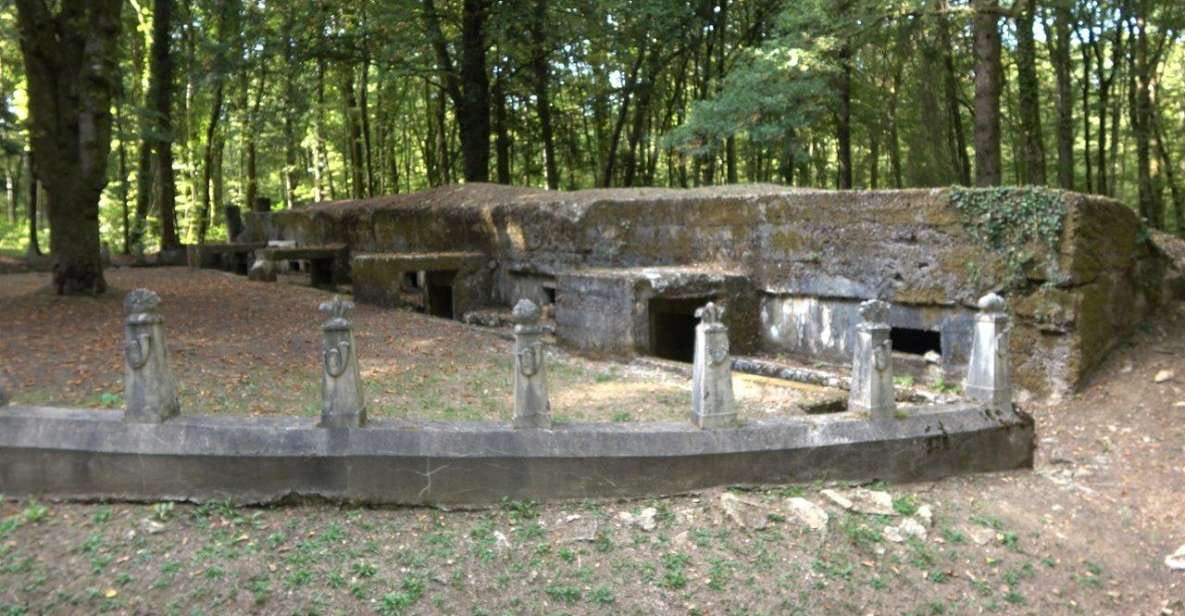
On February 21, 1916, the Kaiser’s armies unleashed a relentless artillery barrage that marked the beginning of their long-planned offensive to capture the fortress town of Verdun, a move designed to bleed the French forces white and shatter their will to fight. For 10 hours, over 1 million shells rained down on the French defenses, tearing apart the landscape and leaving nothing unscathed. The assault was led by the Crown Prince’s 5th Army, with the intent of overwhelming the French and seizing control of the strategic heights around Verdun. The opening salvos of this epic battle set the stage for one of the most grueling and costly campaigns of the Great War.
| Fact | Data |
|---|---|
| Duration of Initial Barrage | 10 hours |
| Shells Fired | Over 1 million |
| Attacking German Army | Crown Prince’s 5th Army |
| Objective | Seize control of strategic Verdun heights |
Douaumont Ossuary Tribute
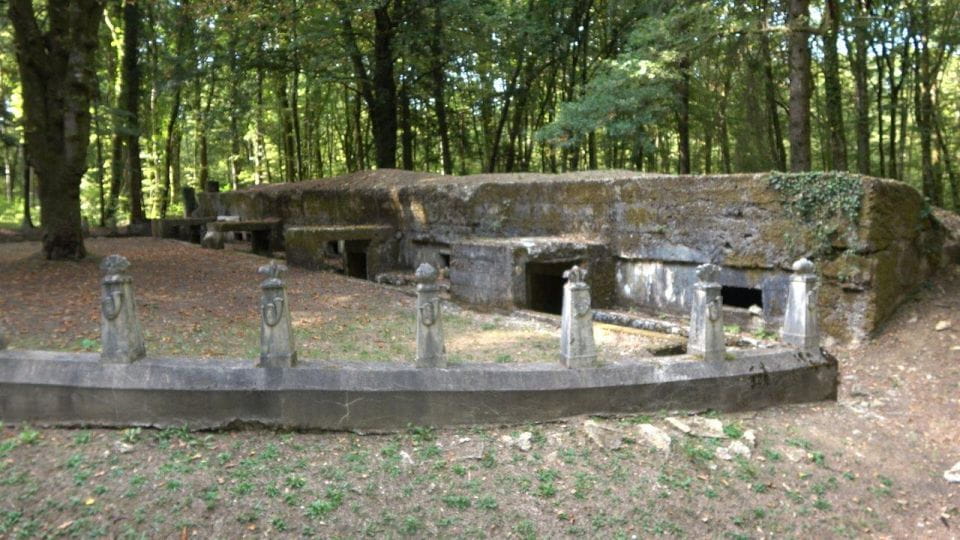
Among the tour highlights is a visit to the Douaumont Ossuary, where visitors can pay their respects to the countless French and German soldiers who perished in the Battle of Verdun.
This solemn monument serves as a poignant reminder of the immense human toll exacted by one of World War I’s bloodiest campaigns.
Towering above the surrounding landscape, the ossuary’s imposing structure houses the remains of over 130,000 unidentified soldiers.
Visitors can reflect on the tremendous sacrifices made during this pivotal battle, where the combatants fought and died for every inch of ground.
The Douaumont Ossuary stands as a powerful symbol of the futility of war and a testament to the enduring spirit of those who gave their lives in defense of their nations.
Bayonet Trench Monument
Amidst the Verdun battlefield, the Bayonet Trench Monument stands as a poignant tribute to the French soldiers who fought and fell in one of the war’s most ferocious engagements.
This stark memorial, with its array of life-sized bayonets jutting from the earth, powerfully evokes the intensity of the close-quarters combat that defined the battle’s brutal urban warfare.
Visitors to the site are struck by the sheer scale of the monument, which spans nearly 200 feet, each upright bayonet representing the countless lives lost in the bitter struggle for control of this critical sector.
It’s a sobering and humbling reminder of the human cost of the Great War’s horrific battles.
Douaumont Fort Exploration
As part of the tour, visitors explore the imposing Douaumont Fort, which stands as a testament to the ferocity of the Verdun campaign. This colossal military structure, with its thick walls and strategic location, played a pivotal role in the battle, changing hands multiple times between the French and German forces.
The tour offers a unique opportunity to explore the fort’s interior, providing a glimpse into the hardships endured by the soldiers who fought to control this crucial stronghold. Visitors can:
- Imagine the chaos and brutality that unfolded within the fort’s confines.
- Appreciate the engineering feats that went into constructing this formidable defensive position.
- Reflect on the immense human cost of the battle for this strategic location.
Fleury Village Ruins

The tour then takes visitors to the former destroyed Village of Fleury, where they can wander through the haunting ruins and envision the devastation that befell this once thriving community during the Battle of Verdun.
Crushed buildings, crumbled walls, and rubble-strewn streets bear witness to the ferocity of the combat that ravaged the area. Amidst the decay, visitors can glimpse the lives upended by the relentless shelling and fighting, imagining the terror and heartbreak experienced by the villagers forced to flee their homes.
The visit to Fleury serves as a sobering reminder of the immense human toll exacted by this epic battle, a tragedy etched into the very stones of the abandoned village.
Froideterre Fort Journey

Next, the tour travels through the historic Fort of Froideterre, a once-formidable structure that played a pivotal role in the Battle of Verdun. Visitors explore the various levels and corridors of this imposing fortress, now a silent witness to the devastation that unfolded on the surrounding battlefield. Through the tour guide’s insightful commentary, they gain a deeper understanding of how this strategic location was bitterly contested, changing hands multiple times as the fighting raged on.
The tour highlights several key aspects of the fort:
- The intricate network of underground tunnels and chambers, once used for storage and troop movements.
- The well-preserved gun emplacements and observation posts, reminders of the intense artillery bombardments.
- The remnants of the fort’s defensive walls, now scarred by the ravages of war.
Tour Logistics and Restrictions
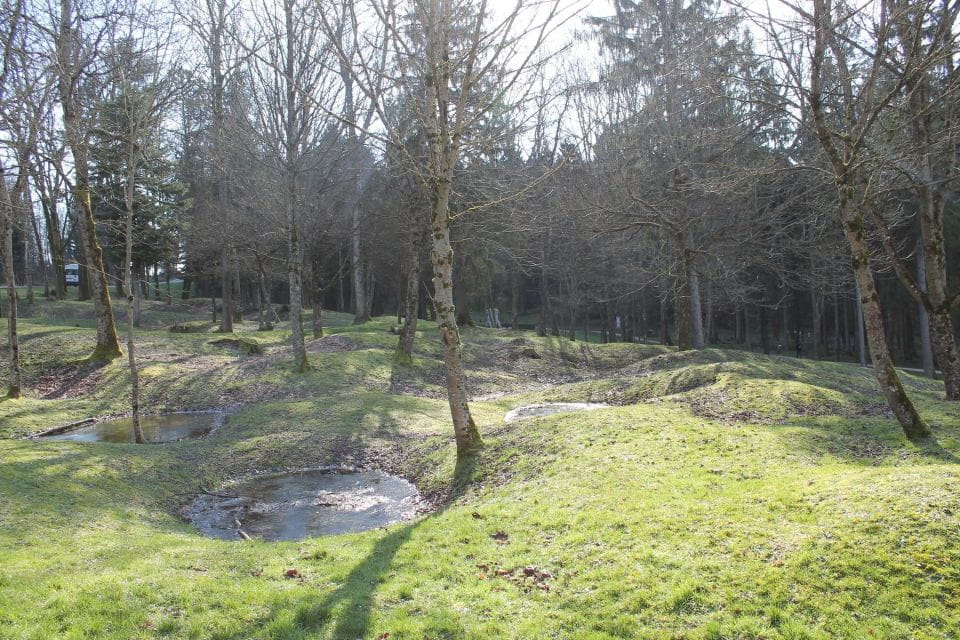
This comprehensive Verdun tour comes with a few important logistical considerations and restrictions that visitors should be aware of beforehand.
The tour isn’t suitable for children under 11 years of age or for those in wheelchairs, as the terrain and accessibility of certain sites may pose challenges.
Guests can expect private transportation to be provided, along with bottled water, though any personal expenses, food, or entrance fees to the Ossuary and/or Forts aren’t included in the tour cost.
While the tour offers an immersive exploration of the Verdun battlefield, it’s important to note these limitations to ensure an enjoyable and comfortable experience for all participants.
Frequently Asked Questions

What Is the Duration of the Private Tour?
The Battle of Verdun tour is a 7-hour private excursion led by an English-speaking French guide. Visitors will explore key battle sites and monuments, gaining a firsthand understanding of this historic World War I conflict.
What Type of Transportation Is Provided?
The private transportation provided for the 7-hour Verdun battlefield tour is a comfortable vehicle. Guests will be driven between the historic sites by an English-speaking French guide.
Can I Purchase Food and Drinks During the Tour?
No, food and drinks are not included in the tour. However, participants can purchase their own food and drinks during the tour if they choose. The tour only provides bottled water in the vehicle.
Is the Tour Suitable for Young Children?
The tour is not suitable for young children, as stated in the restrictions. Children under 11 years old are not recommended to join the tour due to the nature of the subject matter and locations visited.
Are There Any Additional Fees for the Ossuary And/Or Forts?
The tour’s exclusions indicate that there are additional fees to access the Ossuary and/or Forts. Visitors will need to pay these entry fees separately during the tour.
Recap
The Battle of Verdun stands as a sobering reminder of the horrors of war. Though the fighting ended over a century ago, the scars of this battle remain etched into the landscape.
Visiting the Douaumont Ossuary, Bayonet Trench Monument, and other preserved sites offers a profound window into the immense human toll and futility of this prolonged and devastating conflict that exemplified the tragedy of the Great War.
